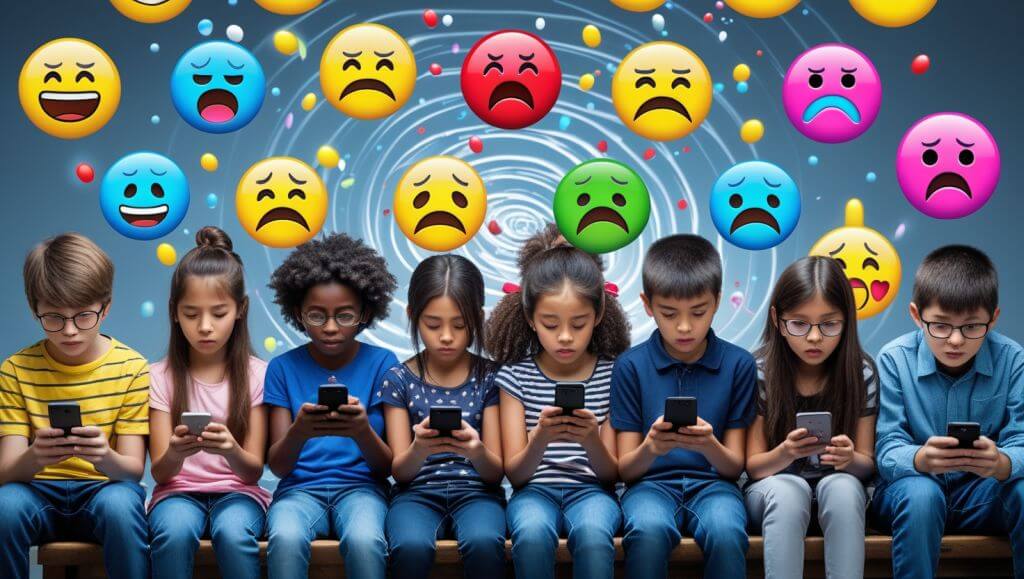Almost one year after the American Psychological Association released its health advisory on social media usage among adolescents, society continues to confront the challenge of optimizing the advantages of these platforms while simultaneously protecting youth from the associated risks. As of early 2024, there have been few significant changes implemented by social media companies, and no federal policies have been established. There remains a pressing need for social media organizations to adopt fundamental modifications to their platforms.
Psychological research continues to uncover both the benefits and risks inherent in social media use, particularly concerning the impact of specific content, features, and functions on young users.
The scientific discourse outlined below highlights the necessity for the development of responsible safety standards aimed at mitigating potential harm.
Detailed Examination of the Science regarding Social Media Content, Features, and Functions
Platforms designed for adult users are not inherently appropriate for youth. It is imperative to provide special protections for young individuals due to their varying levels of competence and vulnerability through the stages of childhood, adolescence, and early adulthood. This concern is particularly relevant for youth facing psychological, physical, intellectual, or developmental challenges, as chronological age does not directly correlate with readiness for social media engagement.
Youth Sensitivity to Social Feedback
Research indicates that brain development occurring from ages 10 to 13 and continuing into the mid-twenties is associated with heightened sensitivity to social feedback. During this critical developmental period, youth tend to invest significant effort in behaviors aimed at obtaining personalized feedback, praise, or attention from their peers. Content that is recommended by artificial intelligence has the potential to be particularly influential and difficult to resist within this age group. Hence, it is essential that such content is curated to prioritize the safety and welfare of youth over engagement metrics.
The mechanisms of likes and follower counts activate neural pathways associated with habitual behavior, thus exerting substantial influence on the attitudes and behaviors of young users. This demographic exhibits sensitivity to both positive reinforcement and rejection, which may lead to patterns of problematic use. Furthermore, the utilization of youth data for the personalization of advertising content is especially influential for those who are biologically predisposed to peer influence.
Youth Need for Developing Relationship Skills
Adolescence represents a crucial period for the cultivation of more sophisticated relationship skills. An emphasis on metrics such as followers, likes, and views can impede the development of healthier and more psychologically beneficial interpersonal skills.
Youth Vulnerability to Harmful Content
During adolescence, individuals experience increased vulnerability to peer pressure, impressionability, and social rejection. Exposure to harmful content, which includes cyberhate, depictions of illicit behavior, and inducements for self-harm, is correlated with the exacerbation of mental health issues. The absence of clear protocols for addressing harmful content can further hinder youth from feeling secure.
Underdeveloped Impulse Control Among Youth
The ongoing development of cortical systems in youth affects their ability to resist impulsive behavior, often resulting in decisions driven by immediate gratification and difficulties in disengaging from social media platforms. Features such as infinite scrolling and push notifications exploit this developmental vulnerability, leading to elevated rates of dependency.
Youth Dependence on Sleep for Healthy Brain Development
A lack of restrictions on social media use can disrupt sleep patterns, which are crucial for both brain development and mental health. Disruptions to sleep negatively impact attention, behavior, mood, safety, and academic performance.
Youth Vulnerability to Malicious Actors
Young individuals are particularly susceptible to deceitful practices by predators and other malicious actors on social media, exposing them to risks such as identity theft and hazardous interactions.
The Necessity for Parental and Caregiver Involvement
Parental support is vital in guiding youth toward safe decision-making and navigating complex social interactions. It is essential to establish transparent and user-friendly parental tools while respecting the adolescents’ need for autonomy and privacy.
A Path Forward Grounded in Scientific Understanding
Youth exhibit considerable variation in their social media usage patterns, with some interactions promoting healthy development and others leading to harm. Scientific findings underscore the necessity for tailored social media functionalities and permissions that reflect the developmental capacities of young users. Current policies frequently fall short, as age restrictions and parental controls alone are inadequate to address these embedded risks.
Limitations of Commonly Proposed Policies
Restricting downloads at the device level does not effectively enhance platform safety. Age restrictions fail to acknowledge individual differences and do not address risks for older users. Furthermore, parental control measures should not disenfranchise youth from reaping the benefits of social media, particularly for those from marginalized groups.

